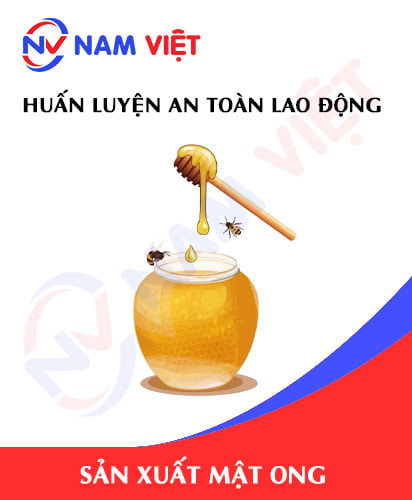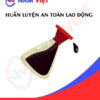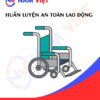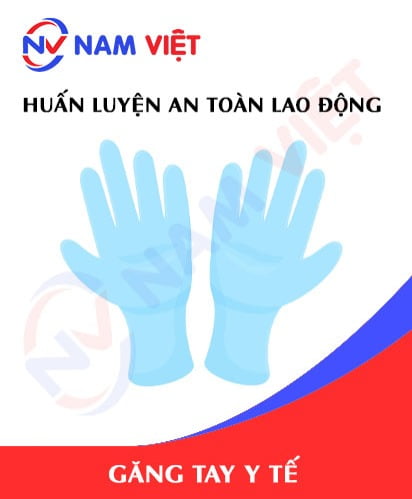Occupational safety training for honey manufacturing
99,000 ₫
Note: The above price is calculated per person, the price may vary depending on the number of trainees participating in the course and market fluctuations. For more accurate pricing support, please refer to the quotation or contact our consultants directly.
Occupational safety is an important issue in honey manufacturing factories and needs to be addressed promptly to ensure the health and safety of workers, and enhance the reputation of businesses. The Occupational Safety Training course is one of the effective solutions to raise awareness about how to prevent workplace accidents for workers participating in honey manufacturing.
Table of Contents
Toggle1. Overview of Honey
a. What is honey?
- Honey is a natural product created by species of bees like honeybees or wild bees. It is produced from flowers, pistils, pollen, and tree sap that bees collect from the surrounding environment. After collecting these substances, bees use enzymes and metabolic processes to convert them into honey.
- Honey has a diverse color and sweet taste, depending on the type of flower the bees used to collect the honey. It has many nutritional components, including natural sugars (glucose and fructose), minerals (magnesium, phosphorus, calcium), vitamins (vitamin C, vitamin B2), and antioxidants. Honey is widely used in cuisine, healthcare, and beauty.
- The current state of the honey production industry in Vietnam is quite developed, with many areas suitable for growing flowers for honey production. The northern mountainous provinces, the Central region, and the Central Highlands are areas with favorable natural conditions for beekeeping and honey production.
- Vietnam has about 1.5 million bee colonies, ranking third in Southeast Asia in honey output, after Indonesia and the Philippines. Vietnam’s honey production reaches about 50,000 tons/year and is growing by 10-15% annually.
- Vietnam’s honey products are exported to many countries around the world such as Japan, the US, the EU, China, and South Korea. In addition, domestically, honey is also a product favored by many consumers for its good quality, high nutrition, and reasonable price.

b. Types of honey production machinery
In the process of honey processing, machines are mainly used to extract and distill honey from the honeycomb. Below are the types of machines commonly used in the honey production and processing industry in Vietnam:
- Centrifuge: used to separate honey and solids from the honeycomb. The honey will be centrifuged out from the solids and filtered to remove any particles or impurities.
- Honey processing machine: used to separate air bubbles and impurities from the honey. It is one of the important steps in the honey production process, helping to ensure the quality and clarity of the honey.
- Honey extractor: used to extract honey from the cells in the frames. The frames are placed inside the machine and the honey will be extracted by pressure.
- Honey distillation machine: used to distill honey from essential oils and beeswax. This process helps remove water and heavy impurities in the honey, thereby increasing its sweetness and durability.
These machines are used to optimize the honey production process, increase productivity, and ensure the quality of the final product.

c. Typical honey production businesses in Vietnam
In Vietnam, there are many honey production businesses, but here are some typical ones in the honey production industry:
- Vietnam Honey Joint Stock Company: is one of the leading businesses in honey production and trading in Vietnam. The company was established in 2009 with a large production scale, specializing in providing high-quality natural honey products that meet international standards.
- Dinh Minh Cuong Trading and Production Co., Ltd.: is one of the reputable honey production and supply units in Vietnam. The company places special emphasis on product quality and always uses advanced technologies to produce high-quality honey.
- Dai Thien Loc Honey Trading & Service Co., Ltd.: is one of the leading businesses in honey production and supply in Central Vietnam. The company uses natural flowers to produce honey, ensuring the honey has a natural flavor and color.
- Ha Long Honey Co., Ltd.: is a business with many years of experience in honey production and supply in Vietnam. The company focuses on producing natural honey without using chemicals, ensuring safety for consumer health.
The above are just a few examples of honey production businesses in Vietnam; there are many other businesses in this industry.
d. Specific jobs in a honey production factory
Group 1
- Executive director, deputy executive director, department head in a honey production factory.
Group 2
- Safety officer: manages safety in the factory, designs safety procedures, supervises and urges employees to comply with safe working procedures.
Group 3
- Honey harvesting: The first job in honey production is harvesting honey from the hive area. Employees often use protective clothing and equipment to avoid being stung by bees.
- Honey separation: After harvesting the honeycombs, the honey needs to be separated from the bee cells using special machines.
- Filtering and quality control: The separated honey needs to be filtered to remove impurities and remaining particles. Then, the honey is quality checked using measuring devices to ensure it meets standards.
- Packaging and storage: After quality control, the honey is packaged into suitable containers and stored in a cold or dry warehouse to ensure safety and keep the honey fresh.
- Factory management and operation: In addition to specific production tasks, employees also perform factory management and operation tasks, ensuring production processes follow standards and machinery and equipment always operate well.
Group 4
- Jobs in the office, service, sales, and marketing.
- Production management, quality management, human resource management, material management, accounting and financial management.
- Research and development of new products, design of product packaging.

2. Overview of the Occupational Safety Training Course in Honey Production
Within the scope of this article, we focus on issues related to Group 3, because Group 3 is the group directly involved in the production process and bears the highest risk of occupational accidents. Learn more about other groups here
a. What is Group 3 occupational safety training?
- Occupational safety training for Group 3 are training sessions that provide awareness on how to prevent occupational accidents for employees.
- The occupational safety training course will help employees recognize and prevent dangers, and limit the risks of occupational accidents during work.
REGISTER FOR OCCUPATIONAL SAFETY TRAINING SERVICE
b. Training Duration
Initial safety training duration
- The total training duration is at least 24 hours, including examination time.
- 8 hours of theoretical study on the system of policies and laws on occupational safety and health
- 8 hours of theoretical study on basic knowledge of occupational safety and health
- 4 hours of theoretical study on specialized training content
- 2 hours of practical training on specialized training content
- 2 hours of theoretical examination at the end of the training course
The safety training center will divide the time into many training sessions depending on the time arrangement for the employees. But usually, there will be 6 training sessions, the course will take place for 3 days, provided that the manufacturing company can arrange continuous study time.
Periodic safety training duration
- Before the occupational safety card expires, if employees want it renewed, they must undergo a periodic occupational safety training course, with the periodic safety training duration being at least 50% of the initial safety training duration.
Explanation: the total periodic occupational safety training duration is at least 12 hours, including the examination time. After completing the periodic training course and passing the exam, the employee will be re-issued or have their occupational safety card renewed.
c. Content of the Training Course
| No. | TRAINING CONTENT | TRAINING DURATION (HOURS) | |||
| Total | Of which | ||||
| Theory | Practice | Exam | |||
| I | System of policies and laws on occupational safety and health | 8 | 8 | 0 | 0 |
| 1 | Overview of the system of legal normative documents on occupational safety and health. | 6 | 6 | ||
| 2 | System of technical standards and regulations on occupational safety and health. | 1 | 1 | ||
| 3 | Specific regulations of state management agencies on occupational safety and health when newly building, expanding, or renovating facilities for the production, use, preservation, storage, and inspection of machinery, equipment, materials, and substances with strict requirements on occupational safety and health. | 1 | 1 | ||
| II | Basic knowledge of occupational safety and health | 8 | 8 | 0 | 0 |
| 1 | Basic knowledge of dangerous and harmful factors at the workplace. | 4 | 4 | ||
| 2 | Methods for improving working conditions. | 1 | 1 | ||
| 3 | Safety culture in production and business. | 1 | 1 | ||
| 4 | Rights and obligations of the employer, employee; policies and regulations on occupational safety and health for employees; functions and duties of the network of safety and health officers. | 1 | 1 | ||
| 5 | Occupational safety and health regulations, safety signs and directions, and the use of safety equipment, personal protective equipment; first aid skills for occupational accidents, and prevention of occupational diseases. | 1 | 1 | ||
| III | Specialized training content | 6 | 4 | 2 | 0 |
| General knowledge of types of machinery, equipment, and substances that generate dangerous and harmful factors; analysis, evaluation, and management of occupational safety and health risks, safe working procedures with machinery, equipment, and substances with strict requirements on occupational safety and health. | 6 | 4 | 2 | ||
| IV | Occupational safety training exam at the end of the course | 2 | 2 | 0 | 0 |
| Total | 24 | 22 | 2 | ||
See more training content for 6 groups
d. Occupational Safety Card
After completing the occupational safety training course and passing the exam, the employee will be issued an occupational safety card (also commonly referred to as a Group 3 occupational safety certificate).
The Group 3 safety card will clearly show information such as: full name, date of birth, specific job and work environment. It will also include the training duration, a red stamp, and a signature certifying the completion of the training course.
According to the regulations for issuing safety cards stipulated in clause 2 of Article 24 of Decree 44/2016/ND-CP, there are two cases:
- If there is a labor contract between the employer and the employee, the employer must sign, stamp, and seal the safety card for the trained Group 3 employee after they complete the training course from a safety training unit and pass the exam.
- In the case of freelance or seasonal workers with no labor contract, the training unit must sign, stamp, and seal the safety card for the employee after they complete the training course from the occupational safety training unit and pass the exam.

3. Recognizing Dangers Affecting Workers in Honey Production
In the process of honey production, workers may face many dangers that affect their health and safety. Here are some of the main dangers in honey production:
- Honey harvesting requires workers to approach bee hives and they are at risk of being stung by bees.
- If the honey production factory is not properly ventilated, the concentration of toxic gases such as CO2, honey vapor, sugar vapor, alcohol vapor… can increase and endanger the health of workers.
- Using materials and equipment that do not meet safety standards can endanger the health and lives of workers.
- Production equipment, machinery, tools, and materials for moving, loading, and unloading goods… can cause occupational accidents if not used correctly.
- If electrical equipment in the factory is not regularly maintained, not properly insulated, or waterproofed, it will pose a risk of electric shock to workers during production.
4. Common Types of Occupational Accidents for Workers in Honey Production
Common occupational accidents in honey production can include:
- Getting punctured, cut, or burned by colliding with honey processing equipment, such as cutting knives, presses, filters, and containers.
- Getting an electric shock during the operation of honey processing equipment that has an electrical leak.
- Getting crushed, ground, or compressed during transportation, loading, unloading, or machinery operation.
- Gas poisoning from the process of burning honey or using burning lamps to reduce humidity in the storage warehouse.
- Slipping, falling, or experiencing back pain from working long hours in difficult or uncomfortable positions.
5. Safety Measures When Participating in Honey Production
To ensure the safety of workers during honey production, the following safety measures should be implemented:
- Ensure food safety and hygiene: Production areas must be kept clean and dry to prevent the growth of bacteria and mold. In addition, honey must also be kept at a suitable temperature and humidity to avoid changes in product quality.
- Occupational safety training: All people working in a honey production factory need to be trained in occupational safety. They need to know how to use personal protective equipment and how to avoid occupational accidents when working with machinery and equipment.
- Use personal protective equipment: Workers need to be provided with personal protective equipment, such as masks, safety glasses, gloves, and coats, to avoid being stung, cut, or burned during the production process.
- Regularly inspect equipment and machinery: Equipment and machinery need to be inspected regularly to ensure they operate efficiently and safely. If faults or damages are detected, they need to be repaired or replaced immediately.
- Adjust the production process: The production process needs to be designed to be safe, ensuring that occupational accidents are avoided. For example, machinery and equipment should be placed in a safe position, materials and products need to be loaded and unloaded correctly, and warning signs are necessary to avoid being hit or colliding.
- Ensure product quality regulations: Product quality regulations need to be followed to ensure consumer safety. Honey products need to be quality checked before being put on the market.
- Periodically organize work environment monitoring in factories and enterprises, collect and analyze harmful factors to workers, and then adjust to reduce the level of harm to prevent occupational diseases.

6. Benefits of Occupational Safety Training in Honey Production
An Toan Nam Viet provides businesses with excellent benefits after completing occupational safety training courses as regulated in Decree 44/2016/ND – CP on occupational safety and health for companies, factories, and enterprises.
- Employees can recognize the potential risks of occupational accidents and take preventive measures to avoid them.
- Your business can establish risk prevention measures in the production, operation, and maintenance processes.
- Reduce costs when safety risks occur in the workplace.
- Uninterrupted production will help increase labor productivity and product quality.
- Comply with occupational safety laws, avoiding legal risks.
- Create a reputation and professionalism in all aspects, thereby elevating your business’s brand.
Nam Viet’s training courses are a solution to prevent and combat external factors affecting individuals so they can avoid dangers that can lead to injury or, more seriously, death.
REGISTER FOR OCCUPATIONAL SAFETY TRAINING SERVICE
7. Customer Feedback after Completing the Occupational Safety Training Course in Honey Production
An Toan Nam Viet has many years of experience in the mission of accompanying many businesses in Vietnam in general and in the southern provinces in particular. And that responsibility is something extremely valuable to Nam Viet, which is why our Occupational Safety Training is always focused on becoming more and more professional. The motivation for An Toan Nam Viet’s current strong development comes from the positive feedback and suggestions from our partners. Below are the testimonials from our valued partners whom we have served.
Bac Nam E&C Investment and Construction Joint Stock Company
“The first time I used the service at An Toan Nam Viet, I was very surprised by the enthusiastic 24/7 support from the team of consultants. The class organization was very fast and convenient for our company, thank you very much for Nam Viet’s service!”
Hoa Dat Construction and Trading Joint Stock Company
“Nam Viet’s service has helped us a lot in simplifying occupational safety and completing safety dossiers to serve our work process. The team of consultants is enthusiastic and timely in answering our questions. 5 stars for Nam Viet”
See more customer interviews after using An Toan Nam Viet’s service
8. An Toan Nam Viet’s Occupational Safety Training Capability
An Toan Nam Viet is a reputable and high-quality occupational safety training center in Vietnam today. Occupational safety training sessions are held continuously at production workshops, factories, or construction sites across the country (all 63 provinces and cities in Vietnam).
REGISTER FOR OCCUPATIONAL SAFETY TRAINING SERVICE
Occupational safety training license
- An Toan Nam Viet has been inspected and certified by the Safety Bureau of the Ministry of Labor – Invalids and Social Affairs as qualified to operate occupational safety and health training. This further strengthens our capacity in occupational safety training.

Training materials and lectures
- Before occupational safety training materials are used in occupational safety training courses, they are reviewed and approved to ensure that the lectures are factually correct and effective when applied.
- The teaching method of our instructors is standardized according to An Toan Nam Viet‘s teaching standards, which is a method that experts in occupational safety and health training have researched and refined during their teaching to bring the highest knowledge absorption efficiency to trainees.
Facilities
- Controlling the factors in the classroom that affect the training process will increase teaching performance and the effectiveness of student knowledge absorption.
- Our training support facilities always provide spacious classrooms that meet standards for area, lighting, training equipment, etc.
9. Reputable and Quality Nationwide Safety Training Center
At An Toan Nam Viet, we always prioritize our professional dedication to occupational safety training. For us, imparting the knowledge of self-protection to workers so they have a safe foundation on their livelihood path is contributing to building the country.
To ensure effective training, we meticulously and carefully prepare every small detail. From preparing teaching tools, equipment, and devices to textbooks, materials, sound, and lighting.
Our occupational safety training instructors are experts with many years of experience in the field. They even have research projects identifying dangers in all occupations and how to prevent them.
The instructors’ lectures are distilled from real-world practice and are conveyed in the most vivid and easy-to-visualize way for workers. These factors help workers feel comfortable during their study time and absorb our taught knowledge well. Of course, the knowledge conveyed always closely follows Decree 44/2016/ND-CP.
From there, they grasp many measures to prevent dangers and how to protect themselves. At the same time, they can apply it in the most appropriate way in their actual work.
Our safety training center is proud to be a reputable and professional provider of occupational safety training services with the following advantages:
- Competitive training costs but training quality is still guaranteed.
- Flexible training schedule with the production situation of the company.
- Fast and legally compliant procedures for issuing occupational safety training certificates.
- Training instructors are highly experienced professionals with many years in the field.
- The classroom environment is controlled for factors that affect the training process, increasing teaching efficiency and student knowledge absorption.
- The lectures are compiled to be suitable for occupational safety work at businesses.
- An Toan Nam Viet works with dedication and professionalism to support customers accurately and as quickly as possible.

10. Additional reference materials for occupational safety training in honey production
- Occupational safety training materials for honey production
- Set of occupational safety training materials
- Set of occupational safety training exam questions
- Occupational safety multiple-choice test for honey production
- Slides for the occupational safety training lecture on honey production
1 review for Occupational safety training for honey manufacturing
No comments yet















namchinh.haiphong341
Dịch vụ huấn luyện an toàn lao động rất tốt nhé!